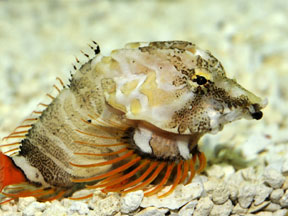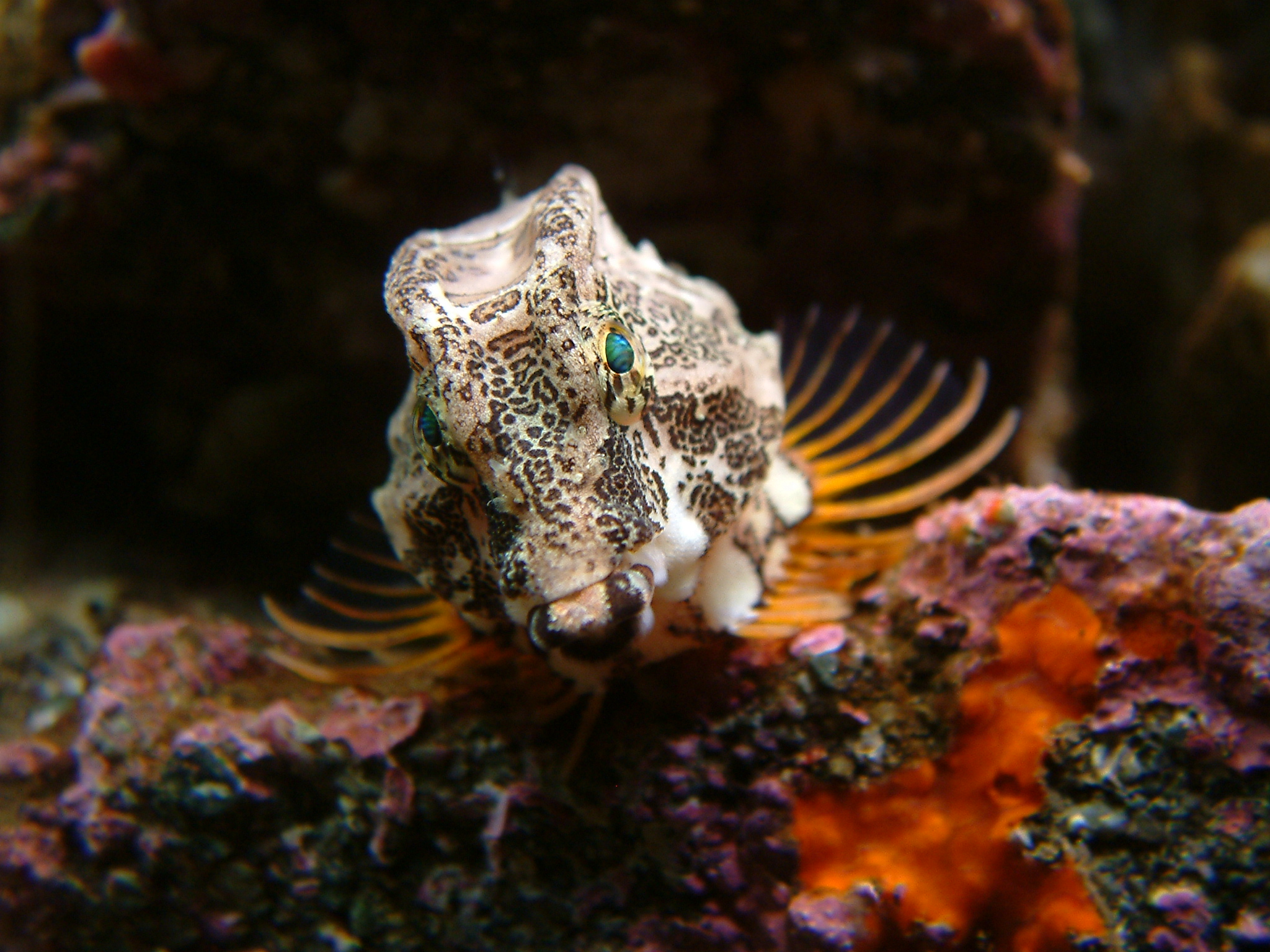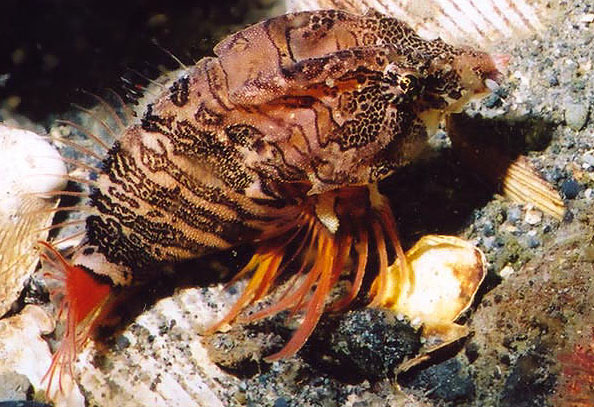
Rhamphocottus richardsoni
FAMILY
Cottidae
TAXONOMY
Rhamphocottus richardsoni Gьnther, 1874, Fort Rupert, western
North America (Prince Rupert, British Columbia, Canada).
Sometimes classified alone in the
FAMILY
Rhamphocottidae.
OTHER COMMON NAMES
English: Grunt-fish, pigfish.
PHYSICAL CHARACTERISTICS
With a short, stout body and a large head with elongate snout,
the resemblance of a grunt sculpin to a pig is only enhanced by
the way it uses its large pectoral fins to scoot around on the
seabed. The lower rays of the pectoral fin are elongate and
have almost no webbing. The body is covered with small,
bristly spines. All of the fin rays are unbranched and the tail
bones are fused, as in poachers (Agonidae). These fish grow to
3.3 in (8.3 cm).
DISTRIBUTION
From Santa Barbara, California, to the Bering Sea coast of
Alaska.
HABITAT
Occurs in shallow coastal waters down to 660 ft (200 m) depth,
on rocky or shell/sand bottoms, often associated with encrusting
invertebrates like giant barnacles.
BEHAVIOR
The elongate pectoral rays can function like fingers for crawling
over coarse surfaces. Grunt sculpins are more frequently
observed walking over the seabed than swimming. They hide
in empty barnacle shells and may appear to be mimicking live
barnacles.
FEEDING ECOLOGY AND DIET
Video analysis of predation by grunt sculpins reveals a highly
adapted method of capturing relatively large shrimp by approaching
obliquely, then snapping the head sideways while extending
the snout and sucking water in together with the prey.
REPRODUCTIVE BIOLOGY
Nesting often occurs inside barnacle shells, and controversy exists
over whether the female or the male tends the eggs, or
whether a mated pair trade off guarding duties. Parental care includes
assisting hatching, the parent sucking out hatchlings and
spitting them upward into the water. A young female spawns a
single mass of eggs in late winter or spring, but with increasing
age the females start reproducing with increasing frequency until,
at a decade of age, captive females reproduce year-round.
CONSERVATION STATUS
Not listed by the IUCN. The only conservation concern relates
to possible temporary depletion at popular diving reefs by
past collections for display aquariums. Grunt sculpins are easily
cultured, however, and most specimens for public display are
now propagated in laboratories at major aquariums.
SIGNIFICANCE TO HUMANS
The grunt sculpin is a popular quarry of scuba divers on rocky
reefs along the Pacific Northwest. Similarly, they are popular
for display in aquariums because of their unusual appearance
and interesting habits.
Photo Gallery of - Grunt sculpin





 Animalia Life
Animalia Life